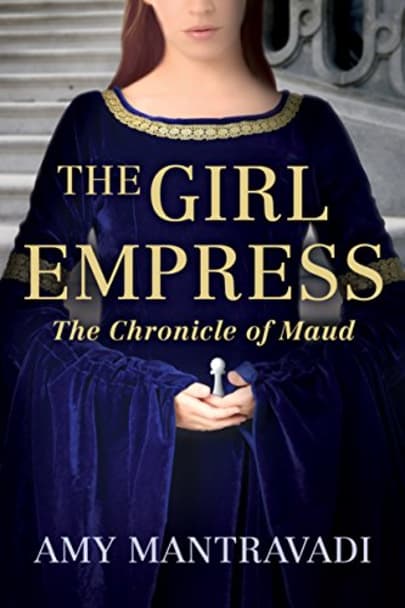Did you ever have that feeling that once you write a review of a book you have just savoured that the euphoric feeling you have just experienced would disappear as soon as the review is written. So you hold off for as long as possible just to hold onto that feeling - this is one of those instances.
Five years ago I read both The Antiquarian and its sequel, The Art Restorer - both stories still vivid in my mind today, but I just had that feeling that if I put pen to paper (figuratively speaking), than I would lose that memory. But the time has come.
The Antiquarian:
A gripping historical thriller in which the search for a mysterious and powerful object hidden in the heart of Barcelona leads to ambition, desire, love—and murder. This story is supposedly based on real events though the author gives us no clue - which is disappointing as I love to follow up with my own research to see how the two parallel.
 We meet a circle of antiquarians - Artur Aiquader, Samuel Horowitz, Enric Torner, Guillem Carelus - who collect historical manuscripts. In this instance, Artur comes into possession of the manuscripts dating back to the 14th century belonging to the Casadevall family with links back to a possible hidden treasure. However, Artur is not ready to share what he has found, and he is soon found murdered, obviously at the hands of one who is known to him. A note from Artur to his adoptive son, Enrique sets off the investigation, not only into Artur's death, but also into the mystery of the manuscript, as it is slowed being translated and its contents revealed, transporting the reader back to 14th century Barcelona.
We meet a circle of antiquarians - Artur Aiquader, Samuel Horowitz, Enric Torner, Guillem Carelus - who collect historical manuscripts. In this instance, Artur comes into possession of the manuscripts dating back to the 14th century belonging to the Casadevall family with links back to a possible hidden treasure. However, Artur is not ready to share what he has found, and he is soon found murdered, obviously at the hands of one who is known to him. A note from Artur to his adoptive son, Enrique sets off the investigation, not only into Artur's death, but also into the mystery of the manuscript, as it is slowed being translated and its contents revealed, transporting the reader back to 14th century Barcelona.
In the 14th century, Europe had become overpopulated, political frontiers had ceased to expand and internal colonization was coming to an end, but population levels remained high. Europe was experiencing a period of climate change which resulted in famine and pestilence, economies took a hit, prices of basic food stuffs rose, and Barcelona, like many other cities, was struck by several outbreaks of the plague.
Social upheaval followed the widespread deaths. Whole families died without heirs, leaving their farms abandoned, and looters and nobles were quick to take advantage; the latter seizing any property unclaimed after 30 days. The result of this abuse and the increased value of labour was a series of peasant uprisings which continued for many years, part of a long struggle of working people against the upper classes.
Turning on others, especially marginal members of society, was a common response during the trauma of the Black Death. Jews, especially, were attacked and killed throughout Europe - and Barcelona was no exception. The violence committed against Jews in the city led to the end of the Jewish neighbourhood, El Call, and foreshadowed greater and more intensified persecutions of Jews, including the Inquisition.
Enrique, with the help of Bety, investigate who within Artur's inner circle could have motive. And there is the shadowy figure of the mysterious Frenchman. Against this historical backdrop, that the last few climatic chapters finally enlighten us, and draws this modern day story to its conclusion.
The Art Restorer:
This sequel sees novelist Enrique Alonso return to Barcelona to attend the reopening of the San Telmo Museum and to catch up with his ex-wife, Bety, now the PR manager. However, it is when art restorer Craig Bruckner is found dead, that Bety suspects foul play and enlists the aid of Enrique to find out what really happened.
 Bruckner's death, and his focus on the works and life of the artist Sert, become the basis for Enriques new novel (set in the 1940s). The past comes back to haunt Enrique is the murder of his adoptive father Artur three years prior still casts a long shadow.
Bruckner's death, and his focus on the works and life of the artist Sert, become the basis for Enriques new novel (set in the 1940s). The past comes back to haunt Enrique is the murder of his adoptive father Artur three years prior still casts a long shadow.
Josep Maria Sert i Badia was a catalan artist, who after studying in Rome, moved to Paris (1899). Sert was commissioned to paint the interior of the Vic Cathedral in the Province of Barcelona, Catalonia in murals (1900), which took him more than 30 years to complete. After this, he also undertook commissions for the Rockerfeller family in the United States (1930s). He was linked with two notable women - Misia Godebska (d.1950) and Isabelle Roussadana Mdivani (d.1938) - who were prominent in the Parisian cultural scene (alog=ng with the likes of Chanel, Cartier, Cocteau, Diaghilev).
Enrique decided to follow in Bruckners footsteps to unravel the mystery of Sert and discover who killed the art restorer and why. The mystery hinges on events in the past, this time, Paris during WW2 when the painter brokered the release of a girl from a concentration camp with a Nazi official - the payment being made in diamonds.
What is glaringly omitted from what little I could find on Sert online, was his life in the 1940s in Paris. Was he in Paris during the war or back in Barcelona where he died (1945).
Essentially this is a well crafted novel with three stories running parallel - the main story; the story of the fictional novelsist; and the backstory to it all, the life of Sert.














![Scotland Yard Casebook by [Lock, Joan]](https://images-fe.ssl-images-amazon.com/images/I/51UWJ3CSvAL.jpg)
![The Trials of Five Queens: Katherine of Aragon, Anne Boleyn, Mary, Queen of Scots, Marie Antoinette, and Caroline of Brunswick by [Deans, R. Storry]](https://images-na.ssl-images-amazon.com/images/I/51b5r7RD1xL.jpg)
![Dance If Ye Can: A Dictionary of Scottish Battles by [Archibald, Malcolm]](https://images-na.ssl-images-amazon.com/images/I/51DNIJmyyXL.jpg)

![Falconland: The Story of Frederick II: A Novel of Medieval Historical Fiction by [Connell, Reggie]](https://images-na.ssl-images-amazon.com/images/I/51USVyVRHiL.jpg)
![Saints and Sinners (Mixed Blessings Book 1) by [Broughton, John]](https://images-fe.ssl-images-amazon.com/images/I/517NY0iXZ8L.jpg)
![Ulf's Tale by [Broughton, John]](https://images-fe.ssl-images-amazon.com/images/I/515rtajYF0L.jpg)


